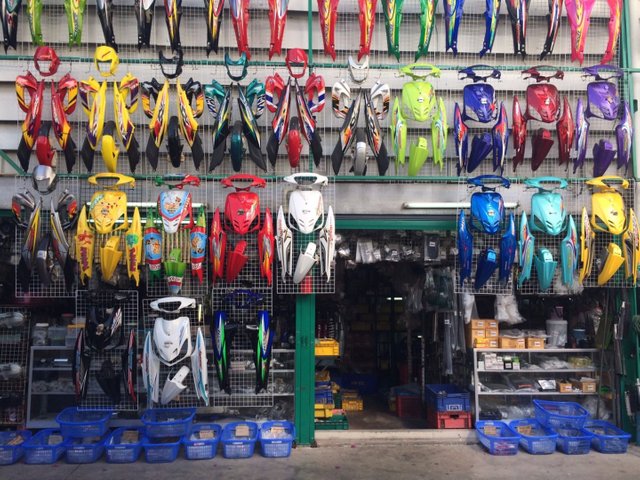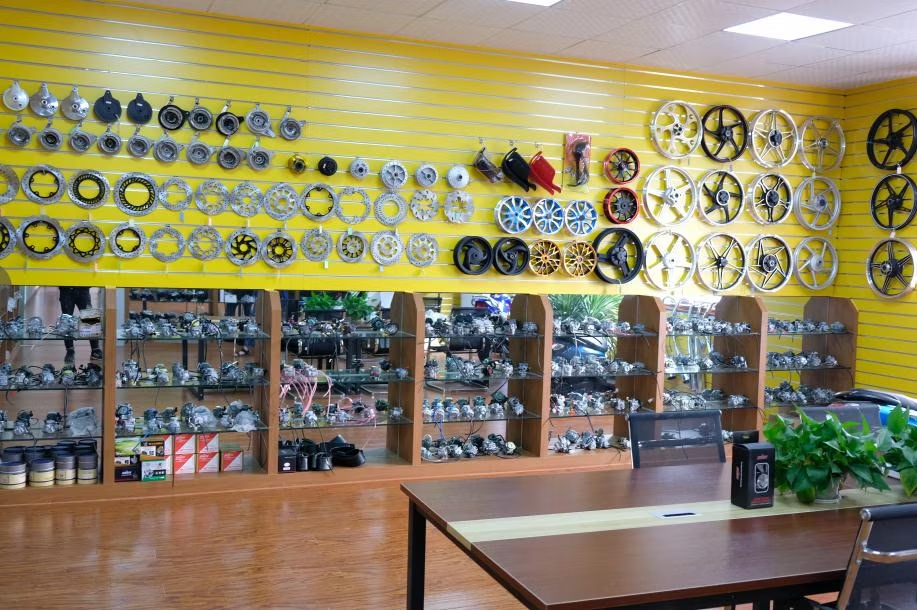Must-Have Motocross Gear: Boost Your Riding Experience Today
Must-Have Motocross Gear: Boost Your Riding Experience Today
Blog Article
Comprehending the Crucial Parts of a Motorbike: A Comprehensive Guide for Enthusiasts
For motorbike enthusiasts aiming to boost their riding experience and ensure their bikes run smoothly, recognizing the essential components of a motorbike is vital. Each element, from the engine's complex workings to the critical function of the braking systems, not just impacts performance yet likewise safety and security and convenience. This overview will go through the essential parts that every rider should recognize with, allowing educated selections in both upkeep and potential upgrades. As we begin this exploration, one must ask: how does each element connect to create the seamless ride every fanatic looks for?
Engine Parts

The camshaft plays a vital function in controlling the timing of the engine's valves, ensuring the precise opening and closing needed for efficient gas and air consumption, as well as exhaust expulsion. This timing is important to maintaining optimal engine efficiency and efficiency. Additionally, the carburetor or fuel injection system, depending upon the motorbike model, is accountable for mixing air with gas in the right ratio for burning.
The cooling system, either air or liquid-based, functions to maintain the engine's temperature level within operational restrictions, avoiding getting too hot and ensuring longevity - motocross gear nz. Each component, carefully designed and integrated, adds to the smooth procedure of the engine, specifying the motorbike's power output and general efficiency
Transmission System
Integral to the bike's capability, the transmission system makes certain efficient power transfer from the engine to the wheels. This system consists of numerous critical elements, including the clutch, gearbox, and final drive, each playing a vital duty in translating the engine's power right into motion. The clutch, typically operated by a hand lever, serves to disengage the engine and involve from the transmission, enabling for smooth gear changes and regulated velocity.
The transmission, commonly described as the transmission proper, contains a set of gears that bikers can by hand shift through to change the bike's speed and torque outcome. These gears are set up in a sequence that makes it possible for the bike to speed up efficiently and keep optimal engine performance throughout different speeds. The majority of bikes utilize a consecutive transmission, needing the biker to shift equipments in an established order.
Braking Systems
While recognizing the transmission system is crucial to taking advantage of a motorbike's power, equally crucial is the capability to control and quit that power properly, which is where braking mechanisms enter play. Brakes are important for safety and efficiency, providing the rider with the necessary control to navigate different surfaces and conditions. Generally, motorcycles feature two kinds of stopping systems: disc brakes and drum brakes.
Disc brakes are a lot more prevalent in modern-day motorbikes due to their premium performance. They are composed of a brake disc, caliper, and pads. When triggered, the caliper squeezes see post the brake pads versus the rotating disc, converting kinetic power into warm, consequently reducing the wheel. This system uses far better warm dissipation, constant performance, and enhanced stopping power, particularly in wet problems.
Alternatively, drum brakes, though less common, are still found in some motorbikes. They work this by pushing brake shoes against the internal surface of a drum connected to the wheel. While typically much less efficient in warmth dissipation and quiting power, drum brakes are simpler and a lot more cost-effective.
Comprehending these stopping systems' nuances permits cyclists to keep their motorcycles appropriately and value the design that ensures effective and risk-free quiting.
Suspension and Guiding
Suspension and steering systems are crucial parts that significantly influence a bike's handling and adventure comfort. The suspension system, containing forks at the front and shock absorbers at the rear, absorbs roadway abnormalities, enhancing security and control. Front forks, inverted or usually telescopic, compress and rebound to minimize impacts, while back shock absorbers preserve tire contact with the road, vital for grip and security.
Steering, focused around the handlebars, attaches the motorcyclist to the motorbike's directional control. The guiding head bearings make certain smooth operation, allowing specific ability to move. Appropriate alignment and maintenance of these bearings are crucial for foreseeable guiding response and decreasing rider exhaustion.
The suspension's adjustability is another crucial element; preload, damping, and rebound settings permit modification to fit numerous riding conditions and designs. This flexibility is necessary for enhancing performance, whether browsing metropolitan streets or tackling sturdy tracks. Developments like electronic shock absorber use real-time adjustments, boosting experience quality throughout diverse surfaces.

Electric Solutions
After ensuring a controlled and smooth experience through reliable suspension and steering systems, interest transforms to the electric systems, a pivotal facet of modern-day bikes. These systems play a crucial role not only in beginning the engine but additionally in powering numerous elements that improve the capability and safety of the bike.
At the heart of a bike's electrical system is the battery, which shops electric power required for beginning the engine and powering supporting systems - motorcycle parts nz. websites The generator or generator, paired with the rectifier-regulator, guarantees the battery stays billed while the motorcycle is in operation, transforming power right into electric energy and maintaining voltage levels
The ignition system, one more essential component, is in charge of stiring up the air-fuel blend in the engine's cyndrical tubes. Modern motorcycles often utilize an electronic ignition system, offering greater efficiency and dependability compared to conventional systems.
Illumination systems, including fronts lights, tail lights, and indicators, are also vital, guaranteeing visibility and safety and security for the biker. Extra digital elements such as sensors, control units, and shows add to advanced features like fuel injection administration, anti-lock stopping systems (ABDOMINAL MUSCLE), and electronic control panels, better boosting the riding experience.
Final Thought
An extensive understanding of a motorcycle's vital elements, including the engine, transmission system, braking mechanisms, suspension, steering, and electric systems, is essential for fanatics aiming to maximize safety, efficiency, and convenience. Proficiency of these elements permits notified decisions pertaining to maintenance and upgrades, ultimately enhancing the riding experience. By incorporating this knowledge, riders can guarantee their motorcycles run at peak effectiveness and reliability, therefore taking full advantage of both enjoyment and long life of their vehicles.
For motorbike fanatics looking to elevate their riding experience and guarantee their bikes run smoothly, recognizing the necessary components of a bike is extremely important.Indispensable to the motorcycle's capability, the transmission system ensures effective power transfer from the engine to the wheels.While recognizing the transmission system is essential to harnessing a motorcycle's power, similarly vital is the capability to manage and quit that power successfully, which is where braking devices come right into play. Usually, motorbikes include two types of stopping systems: disc brakes and drum brakes.
A complete understanding of a motorbike's vital components, consisting of the engine, transmission system, braking devices, suspension, guiding, and electric systems, is essential for lovers intending to enhance convenience, safety and security, and performance.
Report this page